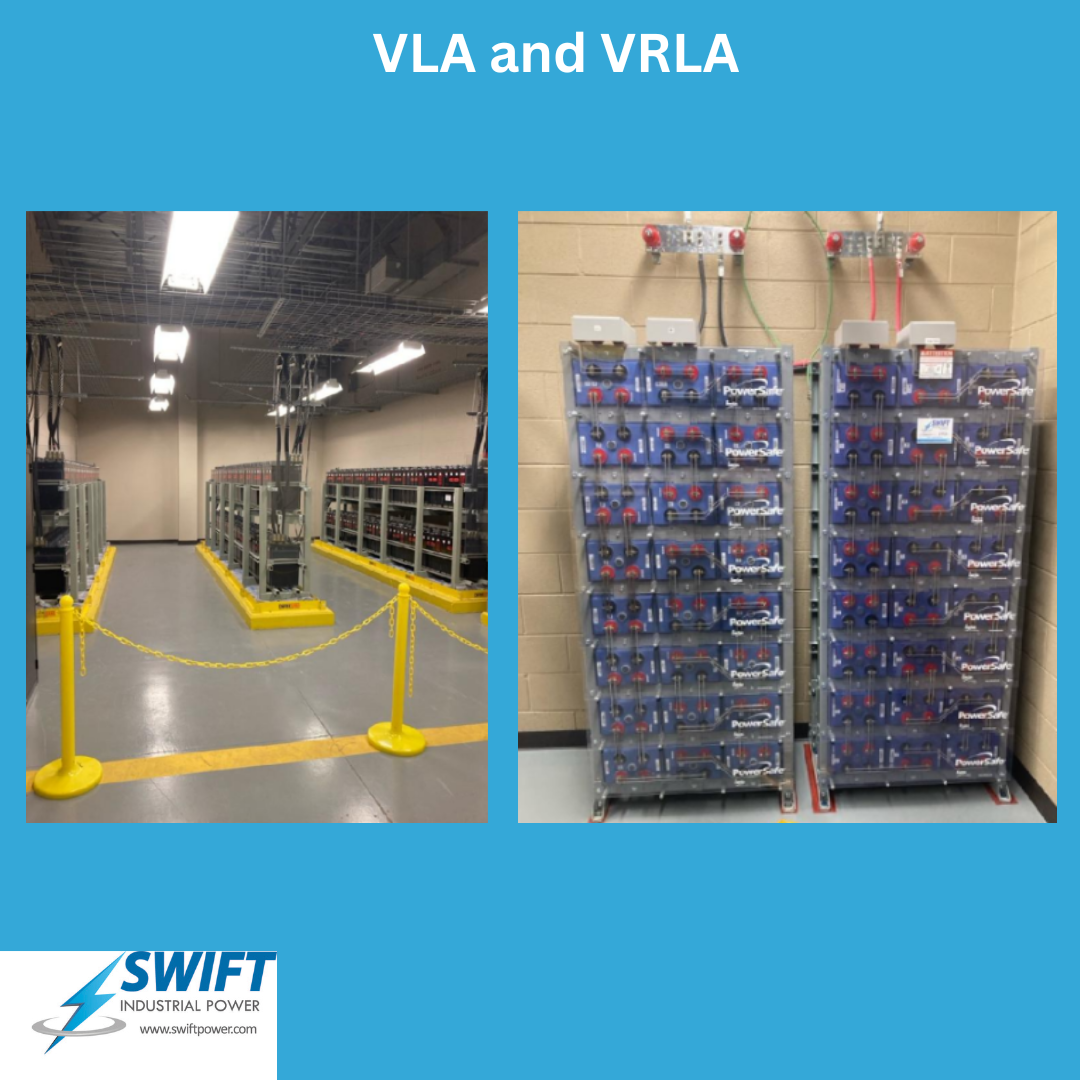How to Choose Between VLA and VRLA Batteries for Your Business
When it comes to selecting the right power solution for your business, lead-acid batteries are a popular choice due to their reliability and cost-effectiveness. However, deciding between VLA (Vented Lead-Acid) and VRLA (Valve-Regulated Lead-Acid) batteries can be challenging. Each battery type has its own unique features, advantages, and considerations, which make them suitable for different applications. In this blog, we’ll break down the key differences between VLA and VRLA batteries, discuss their specific use cases, and help you make an informed decision for your business.
1. Understanding VLA and VRLA Batteries
VLA Batteries (Vented Lead-Acid) Also known as flooded batteries, VLA batteries are traditional lead-acid batteries. These batteries have removable caps, allowing users to add water to maintain electrolyte levels. VLA batteries are widely used in industries where high power is needed over long durations, such as forklifts, backup power systems, and renewable energy storage.
VRLA Batteries (Valve-Regulated Lead-Acid) In contrast, VRLA batteries are sealed lead-acid batteries. These batteries are coined as maintenance-free, but that is largely because they have a pressure relief valve that regulates the release of gas, preventing the need for electrolyte refills. VRLA batteries come in two types: AGM (Absorbed Glass Mat) and Gel, both of which are popular in UPS systems, emergency lighting, and telecommunications.
2. Key Factors to Consider When Choosing Between VLA and VRLA Batteries
A. Maintenance Requirements
One of the commonly discussed differences between VLA and VRLA batteries is the level of maintenance they require. They both have very similar maintenance needs, with the exception that VLA batteries require regular checks on electrolyte levels and topping off with distilled water. Both should have regular checks on voltages, float current, temperature, resistance readings, and physical inspections to name a few. VRLA batteries would not require an inspection of water levels or specific gravity readings but still need to be put on a recurring maintenance schedule.
B. Operating Environment
The conditions under which your batteries will operate play a major role in your decision.
- VLA Batteries: Generally require more space than VRLA batteries due to their physical size and rack layout.
- VRLA Batteries: Can be configured differently than VRLA and will take up less floor space. Many VRLA batteries are put battery cabinets that maximum the floor space.
C. Lifespan and Durability
Battery longevity and resilience are essential factors for many businesses.
- VLA Batteries: Tend to have a longer lifespan if properly maintained, making them a good investment for businesses looking for durability. Most VLA batteries in the proper environment will last 15-20 years.
- VRLA Batteries: VRLA batteries have come a long way but have a shorter lifespan compared to VLA batteries. It is common to get 7-10 years out of many batteries with some touting life expectancy up to 20 years.
D. Initial Cost and Total Cost of Ownership
Budget is a key consideration when choosing batteries, but it’s important to factor in both the initial cost and the total cost of ownership.
- VLA Batteries: Typically have a larger upfront cost for equipment and installation. Overall maintenance costs may be higher as well due to the regular watering.
- VRLA Batteries: Typically have a lower upfront cost for equipment and installation. While maintenance costs may be less annually, you will be replacing them at least once in what would have been the life of a VLA.
3. Making the Right Choice for Your Business
When it comes to choosing between VLA and VRLA batteries, there is no one-size-fits-all answer. The best choice depends on your specific operational needs, environment, budget, and maintenance capabilities.
- VLA Batteries are ideal for businesses that require heavy-duty, long-term power and have the resources for more regimented maintenance.
- VRLA Batteries are suited for companies looking for a lower-maintenance (not Maintenance-Free), versatile solution for confined spaces and backup power needs.
By carefully evaluating the factors above, you can select the battery type that aligns with your business’s requirements and operational goals.
Conclusion
Selecting the right battery for your business is a critical decision that can impact both your operations and your bottom line. Whether you choose VLA or VRLA batteries, understanding their strengths and limitations will ensure your business is powered efficiently, safely, and cost-effectively.
Need help deciding between VLA and VRLA batteries for your business? Contact Swift Industrial Power today for expert guidance and reliable battery solutions tailored to your specific needs. Let us power your success with the right choice!

